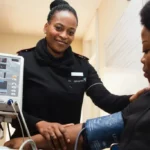STDs have a huge negative impact on sexual and reproductive health all over the world. For men, it can be devastating. This is why it’s important to recognize STD symptoms in men and get immediate treatment.
According to the World Health Organisation, more than a million STDs are acquired every day. In 2020, WHO estimated 374 million new infections with one of four STIs: chlamydia (129 million), gonorrhea (82 million), syphilis (7.1 million), and trichomoniasis (156 million).
To bring down these numbers, we need to understand STDs and the STD symptoms to watch out for. This will help in seeking quick treatment and avoid complications that may affect sexual and reproductive health in the future.
What are STDs?
A Sexually Transmitted Disease, or STD, is an infection passed from one person to another through sexual contact. Bacteria, viruses, or parasites are common causes of these infections.
Sexually transmitted diseases (STDs) are also called sexually transmitted infections(STIs).
There are more than 20 known types of STDs/STIs. Luckily, most STDs can be treated and cured.
What causes STDs?
Bacteria and viruses that grow in warm, moist places in the body cause STDs. They pass from one person to another through sex. Infections can spread from the penis, vagina, mouth, or anus. These infections can be minor or they can be very painful, even life-threatening.
Who is at risk of STDs?
Sexually active people – men and women – risk some degree of exposure to an STD or STI. Factors that may increase that risk include:
- Having unprotected sex.
- Having sexual contact with many partners.
- Having a history of STIs.
- Getting into forced sexual activity with an infected person(s)
- Misuse of alcohol or use of recreational drugs.
- Injecting drugs.
STD Symptoms in Men
Sexually transmitted diseases (STDs) or infections (STIs) can affect anyone, but the signs and symptoms can be different in males and females.
Understanding the risks and knowing the signs and symptoms of common STIs in men is crucial for anyone who’s sexually active.
Below is a list of STD symptoms in men:
1. Chlamydia
Chlamydia is a bacterial infection that is common in young adults who are sexually active. It is caused by the bacterium Chlamydia trachomatis.
At least half of all men with chlamydia don’t notice any symptoms. If they do get symptoms, the most common include:- Pain when urinating- White, cloudy, or watery discharge from the tip of the penisburning or itching in the urethra (the tube that carries urine out of the body)- Pain in the testicles
Untreated chlamydia can cause swelling in the epididymis (the tubes that carry sperm from the testicles) and the testicles. This could affect your fertility.
2. Gonorrhea
Gonorrhea is a sexually transmitted infection (STI) caused by bacteria called Neisseria gonorrhoeae or gonococcus.
Symptoms of gonorrhea usually develop within about 2 weeks of getting infected. They sometimes do not appear until many months later.
In men, symptoms of gonorrhea can include:an unusual discharge from the tip of the penis, which may be white, yellow, or greenpain or a burning sensation when urinatinginflammation (swelling) of the foreskinpain or tenderness in the testicles – this is rare
Gonorrhea, when left undiagnosed and untreated, can continue to spread the infection. This increases the risk of serious complications, including infertility.
3. Trichomoniasis
Trichomoniasis is a sexually transmitted infection (STI) caused by a parasite called Trichomonas Vaginalis (TV).
The symptoms of trichomoniasis are like those of many other sexually transmitted infections (STIs). They can sometimes be difficult to diagnose.
Trichomoniasis in men can cause:- Pain when peeing or during ejaculation- Needing to pee more than usual- Thin, white discharge from the penis- Soreness, swelling, and redness around the head of the penis or foreskin.
Complications of trichomoniasis are rare. Some women with the infection may experience further problems.
4. HIV
The human immunodeficiency virus (HIV) is arguably the most feared STD. Infection with the HIV virus can occur during sexual contact, by sharing needles, or from an infected pregnant woman to her baby. The virus causes dysfunction of the body’s immune system at a later time point. The average time from infection to immune suppression is 10 years.
It’s estimated that up to 80% of people infected with HIV experience this flu-like illness.
The most common symptoms are:- Raised temperature (fever)- Sore throat- Body rash
Other symptoms can include:- Tiredness- Joint pain- Muscle pain- Swollen glands
5. Genital herpes
Genital herpes is a highly contagious STI caused by a type of the herpes simplex virus (HSV). It enters your body through small breaks in your skin or mucous membranes.
When present, genital herpes signs and symptoms may include:- Small blisters that burst to leave red- Open sores around your genitals, anus, thighs, or bottom- Tingling, burning or itching around your genitals- Pain when you pee
6. Hepatitis B
Hepatitis is an inflammation of the liver, often due to a viral infection. One of the most common hepatitis viruses is the hepatitis B virus (HBV). It can pass on through blood, semen, and some other bodily fluids.
Hepatitis B signs and symptoms may include:
– Dark urine- Fever- Joint pain- Loss of appetite- Nausea and vomiting- Weakness and fatigue
Acute Hepatitis B currently has no known treatment. Medications can treat chronic hepatitis B, and research in this area is ongoing. People with chronic hepatitis B need regular checkups for signs of liver disease.
7. Syphilis
Syphilis is a bacterial infection usually spread by sexual contact. The disease starts as a painless sore typically on the genitals, rectum, or mouth. Without treatment, syphilis can severely damage the heart, brain, or other organs, and can be life-threatening. Syphilis can also pass from mothers to unborn children.
There are stages to syphilis infections; broken down into primary, secondary, latent, and tertiary stages. Each stage of syphilis has defined symptoms.
The symptoms of primary syphilis in men include:- A small, firm sore where the bacteria initially entered the body, usually on the penis, anus, mouth, or lips.- Sores can also appear on the fingers or buttocks.- Swollen lymph nodes in the neck, groin, or armpits.
Secondary syphilis can come with the following symptoms:- Skin rashes on the palms of the hands or soles of the feet- Large gray or white lesions in the mouth, anus, armpit, or groin- Fatigue- Headaches- Sore throat- Swollen lymph nodes- Hair loss- Muscle aches
Untreated primary syphilis moves to the secondary stage. If left untreated, it advances to the hidden (latent) stage, when you have no symptoms. The latent stage can last for years. Signs and symptoms may never return, or the disease may progress to the tertiary stage.
Tertiary syphilis is very rare. It can cause severe health complications that affect many organs in the body. The symptoms of tertiary syphilis include:- Meningitis- Stroke- Dementia- Blindness- Heart problems- Numbness
8. HPV (Human Papillomavirus)
The human papillomavirus (HPV) is responsible for a common sexually transmitted infection that shares the same name. Most sexually active people are exposed to it at some point.
HPV typically affects people in their late teens and early 20s. Most men who get HPV never have symptoms. The infection usually goes away by itself. But, if HPV does not go away, it can cause genital warts or certain kinds of cancer.
The most common symptoms of HPV in males are- Warts in the mouth or throat- Genital warts- Small bumps around the penis or anus.
HPV is unusual among STIs because vaccines can prevent it. Vaccines such as Gardasil and Cervarix are effective against HPV types 16 and 18. They are High-risk strains that can lead to certain types of cancer.
How to prevent STDs.
The best way to completely prevent an STD is abstinence.If you cannot abstain, you must maintain sexual contact with one tested partner.
Sexually active men are advised to test every 3 months and avoid sexual contact with untested partners. You should also avoid contact with open sores and bodily fluids of a person whose STD status is unknown.
Other ways to prevent STDs include:– Using barrier protection, such as condoms or dental dams, during sex.- Getting vaccinated. There are vaccines to prevent HPV and hepatitis B.
Conclusion to STD Symptoms in Men.
STDs often show very little to no symptoms in men. Some STD symptoms in men go unnoticed. Hence, the need to undergo regular testing for STDs. Testing ensures quick detection and treatment. It also helps to stop the spread and further complications.
If you happen to know anyone showing any of the STD symptoms listed in this article, please advise them to get tested and start immediate treatment.
Seeking a test can be embarrassing for some people. So, they avoid it. Healthtracka offers private and confidential STD tests in the comfort of your home. Results will get to you within 1-3 days. You also get to speak with a doctor for guidance after testing.
Ready to book? See the available STD test packages here.




